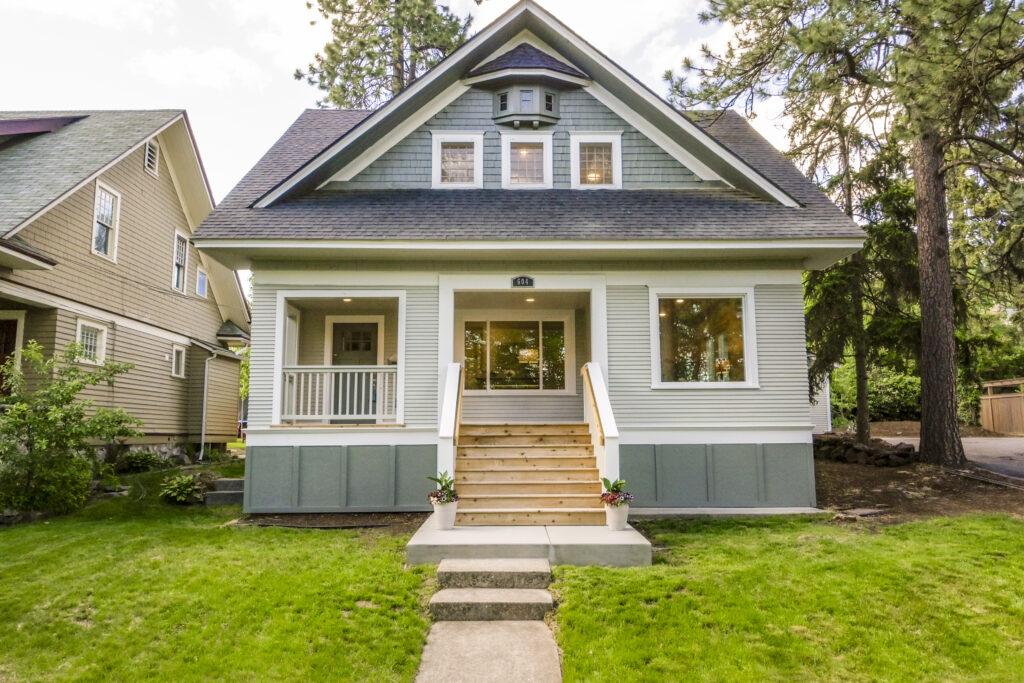Deductibles are a key part of homeowners insurance. And while they can seem a little tricky at first, they’re pretty simple. If you know all about them and how they work, you may be able to save lots of money on your premium.
The deductible you choose affects your home insurance rates. And it also impacts how much money you pay out-of-pocket if you need to file a claim. That’s why you must select the one that fits your financial situation.
This article will explain the essentials of your homeowners deductible. This includes what they are and how they work. We’ll also break down the different types, as well as how to choose the right one for you. Finally, we’ll answer some frequently asked questions.
Homeowners Insurance Deductible Basics
A deductible is the amount of money you must pay before your homeowners insurance covers the remainder of the repairs or losses. You’ll need to pay it when you file a claim with your insurer. You’ll file a claim when something causes loss or damage to your property.
You need to select your deductible when you set up your homeowners policy. You’ll agree with your provider on either an amount of money or a percentage that you’ll need to pay in case of an incident. When you make this decision, you’ll have to think about how much money you’d be willing to pay in an emergency.
Deductibles exist so that you and your homeowners provider both pay money if an accident occurs. Your home insurance premium will reflect the amount of financial risk you assume. For example, most companies will give you lower rates if you set yours higher This is because you agree to pay more money if you file a claim. But having a lower one will likely give you higher rates. The reason for this is that your provider must pay more money and, therefore, deal with more risk.
How Homeowners Deductibles Work
In home insurance, your deductible could work one of two ways. You typically must choose between either a flat or a percentage one. Here’s a definition of both types and an example of how each works:
Flat
The flat (or dollar amount) deductible is a set amount of money that you agree with your insurer to pay if an accident happens. This means that you’ll pay the exact dollar amount you agreed to in your policy if something happens to your house that requires you to file a claim.
As an example, imagine that you have a deductible of $1,000. Suddenly, a terrible storm rolls through and damages your roof, causing you to file a claim. If the repairs for your roof were going to cost $10,000, you’d have to pay $1,000. Once you pay it, your homeowners insurance provider would cover the rest of the money to fix your roof.
Percentage
The other type of deductible is percentage-based. With this, it would be a certain percentage of your home’s insured value, or the total amount of homeowners coverage on your policy.
For instance, let’s assume you’ve insured your house for $200,000 and you have a deductible of 2%. If this were the case, then you’d have to pay $4,000 each time you make a claim. If your home needed $10,000 worth of repairs, you’d have to pay $4,000 and your insurer would pay the leftover $6,000.
Disaster Deductibles
If you live in a state prone to natural disasters, you may have to pay a disaster deductible. This is separate from the standard one on your policy that you pay for more common causes of damage or loss.
You typically need to pay a disaster deductible if your insurer determines that a certain trigger caused damage to your home. Each trigger comes with unique rules and requirements. The two most common triggers are hurricanes and wind/hail:
Hurricane
If you live in a state at risk of hurricanes, you may need to pay a hurricane deductible. This is only the case if you file a claim, and your homeowners provider decides that a hurricane was what damaged your home. Per the Insurance Information Institute (III), insurers look at certain triggers to know when a hurricane is in effect. These include when the National Weather Service (NWS):
- Gives a name, such as “Katrina,” to a hurricane
- Puts a storm warning or official hurricane watch into place
- Describes things about a hurricane such as its intensity or speed
Keep in mind that triggers can vary by insurer or even by which state you live in. Be sure to check with your provider to see which triggers it looks at.
You can usually expect a hurricane deductible to be percentage-based. This means that you’d pay a percentage of the total amount of coverage on your policy if you make any claims. You may be able to pay a flat dollar amount in some cases, but you can expect to pay much more for insurance. However, the III also notes that some states, especially those in “high-risk coastal areas,” may require the use of percentages.
Wind or Hail
You may also need to pay a special wind/hail deductible if your state is at risk of hailstorms or windstorms. This is usually the case in hail valley states such as Wyoming, or tornado alley states like Kansas. This works a lot like the hurricane one in that it usually appears as a certain percentage of your policy’s limits.
High vs. Low Deductibles
The type of deductible you choose and how high you decide to set it is completely up to you. It largely depends on your personal and financial situation. Here are some questions you can ask yourself to figure out how high you should set yours:
How Much Can I Afford to Pay After an Incident?
Bad things can happen at any time. Storms, theft, and natural disasters don’t care about the money in your bank account or out-of-pocket expenses. Consider asking yourself how much money you feel comfortable spending when an incident occurs. If you have a flat homeowners deductible that’s $5,000, you’ll need to pay that any time you decide to file a claim. This could work for some people, but it could be far too much for others.
It’s a good idea to think about things such as your monthly expenses, income, and how much you can afford to save. If you can set aside a good amount of emergency money, you might want to get a higher home insurance deductible. This could give you a drastically lower premium from most companies. But if you can’t afford to shell out for a crisis, it’s probably best to have a lower one.
Do You Live in a Risky Area?
You may think about getting a low deductible if you live in an area where crime or disasters are more frequent. This could protect you from having to spend a lot of money whenever you need to make a claim.
On the other hand, consider a high deductible if you live in an area with less of a risk of regular accidents or threats. This could help you save on your home insurance. Just remember that having a higher one means more financial risk if something unexpected happens.
Do You Want Lower Homeowners Rates?
There are trade-offs with having either a high or low homeowners deductible. As mentioned, a higher one can reduce how much you pay for coverage. But you’ll have to pay more if you file a claim. With a lower one, you’ll pay less each time you need to file, but you’ll likely pay more for insurance.
You’ll have to decide what’s most important for your situation. Would you prefer higher rates but lower financial risk? Or would you prefer lower rates but higher financial risk? These are important things to think about before you choose your home insurance deductible.
What Is the Average Homeowners Deductible?
Some use the wisdom of the herd and select the average most people use for their home insurance. We don’t condone this for making financial decisions, but we can all learn from what others have done before us. That said, there aren’t a ton of options when it comes to your homeowners deductible.
According to Progressive, most people have deductibles between $500 and $5,000. Most homeowners choose one between $500 and $2,000. American Family puts the average at $1,000. It all depends on how safe you feel and how much you’re prepared to pay out-of-pocket.
Frequently Asked Questions
What is a homeowners insurance deductible?
A deductible refers to the amount of money you must pay before your home insurer covers the rest. You can choose to set a high or low one. It’ll just depend on your situation.
How much should my deductible be?
How high or low you set your home insurance deductible is a personal decision. Your best bet is to consider how much you can or are willing to pay. The higher it is, the lower your premium, and vice versa. In the end, think about how much you have saved up and are willing to pay or how much you’d like to pay for coverage.
It’s not uncommon for people to choose a deductible of $1,000. This is because it gives you enough risk to potentially lower your rates, but not enough to set you back months of income.
Is it better to have a high or low deductible?
There are pros and cons to setting either a high or low homeowners insurance deductible. A high one can help you save, but it means you’ll have to pay more when you file a claim. A low one can protect you from breaking the bank when an accident occurs, but you’ll undoubtedly have to pay more for coverage. Whether each one is better just depends on what you value most, having lower rates or having less financial risk.


